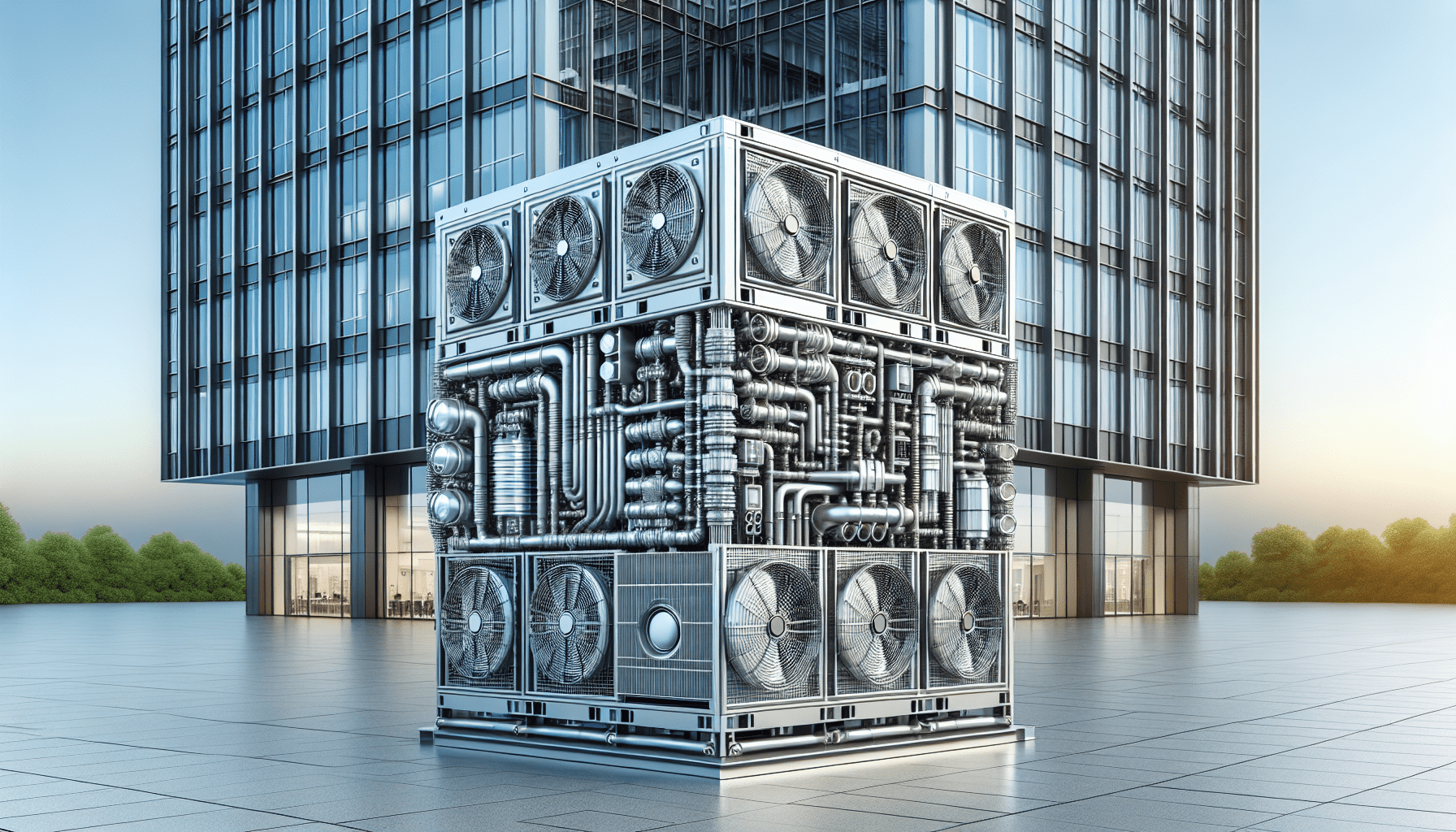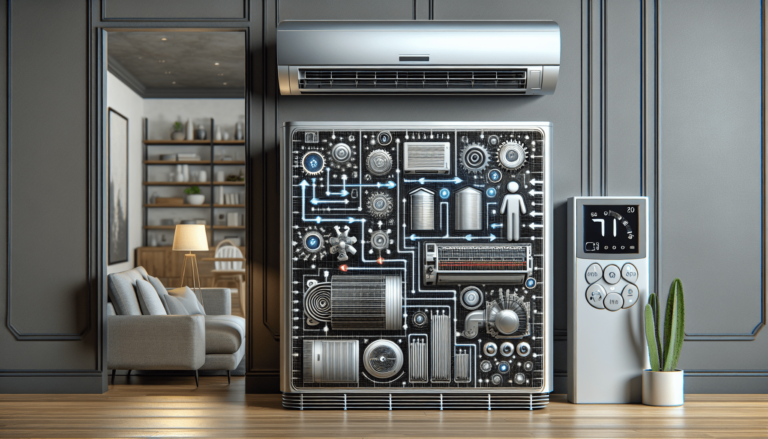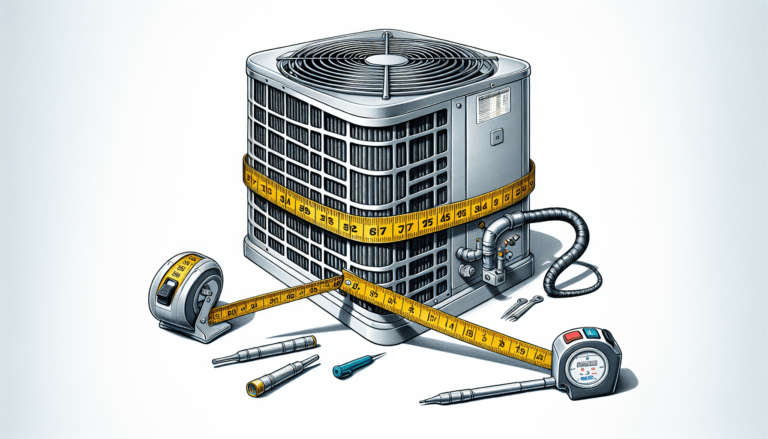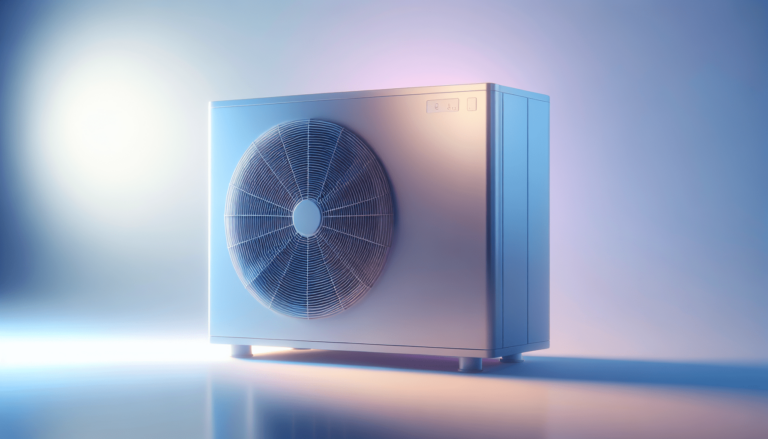

HVAC Services
Get Professional Repairs From The Area's Trusted HVAC Technicians. Ask About Our Services! We Offer Professional Heating & Cooling System Repairs And Guarantee Long-Lasting Results.
Got Question? Call us: (850) 678-2665Financing
Design Considerations For Commercial HVAC Integration
Explore the detailed landscape of commercial HVAC with our post on Design Considerations For Commercial HVAC Integration. Comfort, efficiency, and expertise await!

Have you ever walked into a commercial building and immediately felt the temperature hit you like a warm, comforting embrace or an icy, refreshing breeze? That’s usually thanks to a well-designed HVAC system. As a business owner or a facility manager, understanding the nuances of commercial HVAC integration can be pivotal for the comfort of your occupants and the efficiency of your building.

The Basics of Commercial HVAC Systems
Let’s start with the basics: HVAC stands for Heating, Ventilation, and Air Conditioning. These systems are designed to control the indoor climate and maintain a comfortable and safe environment. Commercial HVAC systems are scaled-up versions of the residential systems you might be familiar with, designed to cope with larger spaces and different demands.
Heating
Heating systems in commercial buildings can include boilers, furnaces, and heat pumps. Each has its own set of advantages and challenges. For example, boilers are efficient but can be expensive to install, while heat pumps can be more cost-effective but may not be suitable for all climates.
Ventilation
Ventilation is crucial for exchanging indoor air with outdoor air, thereby improving indoor air quality. This can involve a combination of natural and mechanical methods. Proper ventilation removes pollutants, controls humidity, and introduces fresh air, contributing to a healthier and more comfortable environment.
Air Conditioning
Air conditioning systems are essential for cooling indoor spaces during warmer months. They come in various forms, including central air conditioners, split systems, and ductless mini-splits. The choice of system can depend on factors like the size of the building, existing infrastructure, and budget.
Key Considerations for Integrating Commercial HVAC Systems
Integrating an HVAC system into a commercial building isn’t just about choosing the right equipment. Several factors need to be considered to ensure the system runs efficiently and effectively.
Building Design and Layout
The design and layout of your building play a significant role in determining the type of HVAC system that would be most effective. Open spaces, high ceilings, and large windows can affect airflow and temperature distribution.
Space Utilization
Understanding how different areas of the building are used can help in designing an efficient HVAC system. For instance, a data center will have different cooling needs compared to an office space.
Ventilation Paths
Properly planned ventilation paths are essential for ensuring that air circulates effectively throughout the building. This involves planning the placement of air ducts, vents, and exhaust systems to optimize airflow.
Climate and Weather Conditions
The local climate and weather conditions can greatly influence the type of HVAC system you should install.
Seasonal Variations
In regions with distinct seasonal variations, you might need a more versatile system that can handle both extreme heat and cold. Dual-purpose systems like heat pumps can be advantageous in such scenarios.
Humidity Control
Humidity control is another crucial aspect, especially in areas with high humidity. Dehumidifiers or specialized HVAC systems can help maintain optimal humidity levels.
Energy Efficiency and Sustainability
With increasing emphasis on sustainability, energy efficiency is a critical consideration in HVAC design.
System Efficiency Ratings
Look for systems with high SEER (Seasonal Energy Efficiency Ratio) or HSPF (Heating Seasonal Performance Factor) ratings. These ratings indicate the efficiency of the system and can help you reduce energy costs.
Renewable Energy Integration
Consider integrating renewable energy sources like solar or geothermal energy. These options can be more sustainable and might even come with financial incentives like tax breaks or grants.
Compliance and Regulations
Compliance with local building codes and regulations is non-negotiable. Failing to meet these requirements can result in fines, project delays, and even legal issues.
Building Codes
Familiarize yourself with local building codes that pertain to HVAC systems. These codes can dictate everything from system types to installation methods.
Health and Safety Standards
Ensure that your HVAC system complies with health and safety standards, including those related to indoor air quality and fire safety.
Budget and Cost Considerations
Budget is often the elephant in the room when it comes to HVAC integration. While it might be tempting to cut corners, investing in a high-quality system can pay off in the long run.
Initial Installation Costs
Factor in the initial costs of purchasing and installing the system. This can vary widely depending on the type and complexity of the system.
Maintenance and Operational Costs
Don’t forget to account for ongoing maintenance and operational costs. Regular maintenance can prolong the lifespan of your system and keep it running efficiently.
Emerging Technologies in Commercial HVAC
The HVAC industry is continually evolving, with new technologies emerging that offer improved efficiency and functionality.
Smart HVAC Systems
Smart HVAC systems use advanced algorithms and IoT (Internet of Things) technology to optimize performance. These systems can adjust settings in real-time based on factors like occupancy and weather conditions.
Variable Refrigerant Flow (VRF) Systems
VRF systems provide individualized room control and consume less energy. They are particularly useful in buildings with varying heating and cooling needs across different zones.
Advanced Air Filtration
With growing concerns about indoor air quality, advanced air filtration systems are becoming more popular. These systems can remove pollutants, allergens, and even viruses from the air, providing a healthier indoor environment.
Case Study: Tempacure Heating and Air Conditioning
Let’s turn our attention to a real-world example to illustrate these points. Tempacure Heating and Air Conditioning, based in Niceville, FL, has been serving commercial clients for years. Their approach to HVAC integration includes a thorough assessment of the building, consideration of local climate conditions, and a focus on energy efficiency.
Assessment and Planning
Tempacure begins each project with a comprehensive assessment. They evaluate the building’s design, existing infrastructure, and specific needs. This helps them recommend the most suitable HVAC system.
Energy-Efficient Solutions
Tempacure prioritizes energy-efficient solutions, often recommending systems with high SEER and HSPF ratings. They also explore renewable energy options, aligning with the growing trend towards sustainability.
Table: Energy-Efficient HVAC Options
| System Type | Efficiency Rating | Suitable For |
|---|---|---|
| High-Efficiency Heat Pumps | SEER 16+ | Moderate climates with seasonal changes |
| Variable Refrigerant Flow | High | Buildings with diverse zoning needs |
| Geothermal Heat Pumps | Very High | Locations with suitable ground conditions |
Compliance and Safety
Ensuring compliance with local building codes and safety standards is a core part of Tempacure’s process. They stay abreast of the latest regulations to ensure their installations meet all requirements.
Customer Education and Support
Tempacure also places a strong emphasis on customer education. They provide detailed information about the systems they install, including maintenance tips and energy-saving advice. This support helps clients get the most out of their investment.

Best Practices for Long-Term HVAC Management
Once you have your system in place, proper management is crucial for ensuring long-term performance and efficiency.
Regular Maintenance
Regular maintenance can prevent many common issues and prolong the lifespan of your system. This includes tasks like changing filters, inspecting ducts, and checking refrigerant levels.
Monitoring and Audits
Implement a routine monitoring and auditing process to track the performance of your HVAC system. This can help identify inefficiencies and areas for improvement.
Upgrades and Replacements
Technology evolves, and so should your HVAC system. Periodically assess whether upgrades or replacements are needed to maintain efficiency and compliance with new regulations.
Conclusion
Integrating an HVAC system into a commercial building is a multifaceted process, involving careful planning and consideration of various factors. From understanding the basics to exploring emerging technologies and best practices, this guide aims to provide a comprehensive overview. Remember, a well-designed HVAC system is a long-term investment in the comfort, health, and efficiency of your building. Whether you’re starting from scratch or looking to upgrade an existing system, taking the time to understand these considerations can make all the difference. And if you need more personalized advice, companies like Tempacure Heating and Air Conditioning are always there to guide you through the process.







